As a content creator at keyfobx.com and an automotive repair expert, I understand the importance of vehicle safety and security. That’s why I’ve put together this guide to the Best Vehicle Cameras currently available. In today’s world, having a reliable vehicle camera, often referred to as a dash cam, is more than just a nice-to-have – it’s an essential tool for protecting yourself and your vehicle.
We’ve rigorously tested over 30 different dash cams from leading brands like Garmin, Nextbase, 70mai, and Viofo to bring you this expert guide. Our focus is on cameras that deliver clear, reliable footage, which is the primary function of any good vehicle camera. Beyond just recording, many of these top picks offer additional features that can be incredibly beneficial.
This guide is structured to help you find the best vehicle camera for your specific needs and budget. Whether you’re looking for a basic, affordable option or a feature-rich, smart camera, we’ve got you covered.
If I were to choose just one vehicle camera for my own car, it would be the Viofo A329. This model earned a 5-star rating in our tests, thanks to its exceptional 4K video quality at 60fps and comprehensive feature set, including the option for a rear camera. For those seeking cutting-edge technology, the Nextbase iQ stands out with its smart features. And if you’re on a budget or prefer simplicity, the Garmin Dash Cam Mini 3 is a fantastic compact and affordable choice.
Our recommendations are based on extensive real-world testing, evaluating each camera in various driving scenarios, from daytime clarity to nighttime performance. This list represents the best of the best, but we also include an “Also Consider” section with other excellent options to ensure you find the perfect vehicle camera for your needs.
Written by Timothy Coleman, TechRadar’s Cameras Editor, whose extensive experience in photography and videography, combined with road testing, makes him a reliable voice in dash cam reviews. His insights are invaluable in understanding what makes a vehicle camera truly effective. As Tim notes, “many of the dash cams in this list have advanced features, such as GPS, surveillance and driver assistance modes. If you don’t need these tools, you can save money by choosing a simpler model.”
Top 3 Picks for Best Vehicle Cameras
For a quick overview of the top vehicle cameras, here are our top three recommendations across different categories. Click the links to jump directly to the detailed review of each model.
1. Viofo A329: Best Overall Vehicle Camera
The Viofo A329 delivers premium performance with stunning 4K video at 60fps and a comprehensive set of features, making it an excellent all-around choice for most drivers.
2. Garmin Dash Cam Mini 3: Best Value Vehicle Camera
The Garmin Dash Cam Mini 3 is a compact and budget-friendly option that doesn’t compromise on video quality, offering reliable Full HD footage with HDR in a small package.
Read more about Garmin Dash Cam Mini 3
3. Nextbase iQ Smart Dash Cam: Best Smart Vehicle Camera
The Nextbase iQ Smart Dash Cam is packed with next-generation features and smart technology, offering a comprehensive vehicle monitoring solution for tech-savvy users.
Read more about Nextbase iQ Smart Dash Cam
Best Vehicle Cameras by Use-Case
To further refine your search, here are our top picks categorized by specific needs and driving scenarios.
4. Miofive S1: Best Cheap 4K Vehicle Camera
The Miofive S1 delivers impressive 4K video quality and built-in GPS at an incredibly affordable price point, making it the best value 4K option available.
5. 70mai Dash Cam Omni: Best 360-Degree Vehicle Camera
The 70mai Dash Cam Omni provides a unique 360-degree view, capturing everything around your vehicle, both inside and out, ideal for comprehensive coverage.
Read more about 70mai Dash Cam Omni
6. Garmin DriveCam 76: Best Vehicle Camera for Older Vehicles
The Garmin DriveCam 76 combines a dash cam with a sat nav system, making it a perfect upgrade for older vehicles lacking modern infotainment features.
Read more about Garmin DriveCam 76
The Best Vehicle Cameras in 2024: Detailed Reviews
Why Trust TechRadar? At TechRadar, product reviews are conducted through rigorous testing to ensure you receive reliable and unbiased recommendations. Learn more about their testing methodology.
Below, you’ll find in-depth reviews for each of our top vehicle camera picks. Each camera has been thoroughly tested, so you can trust these recommendations to guide your purchase decision.
The Best All-Rounder Vehicle Camera
Image 1 of 5
(Image credit: Future)
1. Viofo A329
The Best All-Rounder Vehicle Camera
Read Expert Review of Viofo A329
Specifications:
- Video Quality: 4K
- Viewing Angle: 140 degrees
- GPS Tracker: Yes
- Memory: MicroSD card up to 512GB / SSD up to 4TB (not included)
Reasons to Buy:
- Exceptional 4K 60fps Video: The Viofo A329 captures incredibly detailed 4K video at 60 frames per second, crucial for clearly recording incidents and license plates, even at high speeds. From a repair perspective, clear footage can be invaluable when assessing damage after an accident.
- High-Quality Design and Build: The robust build quality ensures durability and reliability, essential for withstanding the rigors of daily use in your vehicle.
- Rear Camera Support: The option to add a rear camera provides comprehensive coverage, protecting you from both front and rear incidents. This is particularly useful in busy urban environments or when parking.
- SSD Compatibility: Supporting external SSDs up to 4TB offers massive storage capacity, ensuring you have ample space for long drives and detailed recordings.
Reasons to Avoid:
- Complex Installation: The hardwiring requirement and numerous cables can make installation challenging for some users. As a car repair expert, I can tell you that proper wiring is crucial to avoid electrical issues.
- Bulky Design: Slightly larger than some competitors, it might be noticeable in smaller vehicles or for those preferring a discreet setup.
- Premium Price: The higher price point may be a barrier for budget-conscious buyers, but the features and performance justify the investment for serious users.
- Tight Cable Connectors: While secure, the tight connectors can be difficult to detach, which could be inconvenient during setup or troubleshooting.
Viofo A329 Sample Footage: (Note: Please refer to online reviews for actual footage as images are missing here)
Buy It If:
- You Demand Superb 4K Footage: For critical situations like accidents and insurance claims, the clarity of 4K 60fps video is unmatched. Clear footage is key for accurate incident reporting and liability assessment.
- You Need Front and Rear Coverage: A dual-channel setup provides complete protection, covering all angles around your vehicle. This is especially beneficial in preventing hit-and-run incidents.
Don’t Buy It If:
- You Prefer Easy Setup: If you’re not comfortable with more involved installations or prefer a plug-and-play device, this might not be the best option. Simpler cameras are available for basic recording needs.
- Basic Features Are Sufficient: If you only need basic recording and don’t require 4K or advanced features, a more affordable, stripped-down dash cam will suffice.
The Viofo A329 is a worthwhile investment if video quality and comprehensive features are your top priorities. While the initial setup might require some effort, the exceptional video quality and robust feature set make it a top performer in the vehicle camera market.
The Best Budget Vehicle Camera
Image 1 of 5
(Image credit: Future)
2. Garmin Dash Cam Mini 3
The Best Budget Vehicle Camera
Read Expert Review of Garmin Dash Cam Mini 3
Specifications:
- Video Quality: 1080p
- Viewing Angle: 140 degrees
- GPS Tracker: No
- Memory: MicroSD card (not included)
Reasons to Buy:
- Compact and Discreet Design: The small size allows for discreet placement behind your rearview mirror, minimizing obstruction and keeping the camera out of sight. This is ideal for drivers who prefer a low-profile setup.
- High-Quality Footage: Despite its small size and price, the Mini 3 captures excellent Full HD video, providing clear and usable footage for most situations.
- Polarizing Lens: The built-in polarizing filter reduces windshield glare, enhancing video clarity, especially in bright sunlight or on reflective dashboards.
- Simple and User-Friendly Interface: Garmin prioritizes ease of use, making the Mini 3 simple to set up and operate, even for those new to vehicle cameras.
Reasons to Avoid:
- Minor Upgrade: If you already own the Dash Cam Mini 2, the upgrades in the Mini 3 are minimal, mainly a polarizing filter and landscape design. Upgrading might not be necessary for Mini 2 owners.
- No GPS: The lack of GPS means no speed or location data is recorded, which might be a drawback for some users who want comprehensive incident documentation.
- No Screen: The absence of a screen means all setup and viewing are done via the Garmin Drive app, which might be less convenient for some users.
- MicroSD Card Not Included: You’ll need to purchase a microSD card separately, adding to the initial cost.
Garmin Dash Cam Mini 3 Sample Footage: (Note: Please refer to online reviews for actual footage as images are missing here)
Buy It If:
- You Want a Hidden Vehicle Camera: The Mini 3’s compact size makes it virtually invisible behind your rearview mirror, maintaining a clean and unobstructed view.
- You Value Simplicity: If you prefer a straightforward, set-and-forget device, the Mini 3 is incredibly easy to install and use, requiring minimal interaction.
Don’t Buy It If:
- You Own the Dash Cam Mini 2: The upgrades are incremental, and not significant enough to warrant an upgrade from the Mini 2.
- You Need 4K Video: The Mini 3 is limited to 1080p Full HD. If you require higher resolution video, you’ll need to consider a more premium model.
The Garmin Dash Cam Mini 3 is an excellent choice for drivers seeking a reliable, discreet, and affordable vehicle camera. Its simplicity and good video quality make it a standout budget option.
The Best Smart Vehicle Camera
Image 1 of 5
(Image credit: Future)
3. Nextbase iQ
The Best Next-Gen Vehicle Camera with Smart Features
Read Expert Review of Nextbase iQ
Specifications:
- Video Quality: 1080p/1440p/2160p (front) / 1080p/1440p (cabin) / 1440p (rear)
- Viewing Angle: 140 degrees (front) / 180 degrees (cabin) / 140 degrees (rear)
- GPS Tracker: Yes
- Memory: microSD / cloud
Reasons to Buy:
- Comprehensive All-in-One Solution: The Nextbase iQ offers a complete suite of safety and security features, acting as a smart surveillance system for your vehicle. This level of integration is beneficial for comprehensive vehicle monitoring.
- Impressive Smart Features: Features like parking assistance, voice-activated Witness Mode, and remote vehicle monitoring via the app provide advanced functionality beyond basic recording.
- Premium Design and Build Quality: The iQ is well-designed and built with high-quality materials, reflecting its premium positioning and ensuring long-term durability.
Reasons to Avoid:
- Feature Overload: The extensive feature set might be overwhelming for users who only need basic dash cam functionality. Simpler cameras are available for less demanding users.
- Subscription Required for Full Features: Many advanced features require a paid subscription, adding to the overall cost of ownership. The free subscription tier is limited in functionality.
- Subscription Costs: The ongoing subscription fees can make the iQ a more expensive long-term investment compared to cameras with one-time purchases.
Nextbase iQ Sample Footage: (Note: Please refer to online reviews for actual footage as images are missing here)
Buy It If:
- You Want an All-in-One Vehicle Camera: If you’re looking for a comprehensive system with advanced safety and security features, the Nextbase iQ is the most feature-rich option available.
- You Desire a Future-Proof Model: Ongoing firmware updates promise to add even more functionality, ensuring the iQ remains cutting-edge and up-to-date.
Don’t Buy It If:
- You Don’t Need Complex Features: If you only need to record basic driving footage, simpler and more affordable dash cam options are available.
- You Prefer Subscription-Free Operation: If you want to avoid ongoing subscription costs, the Nextbase iQ’s subscription model might not be appealing.
The Nextbase iQ is a top-tier smart vehicle camera for those who want the latest technology and comprehensive vehicle monitoring. While the subscription model adds to the cost, the advanced features and future-proof design make it a standout choice in the smart dash cam category.
The Best Cheap 4K Vehicle Camera
Image 1 of 5
(Image credit: Future)
4. Miofive S1 Ultra
The Best Cheap 4K Vehicle Camera
Read Expert Review of Miofive S1 Ultra
Specifications:
- Video Quality: 4K 30fps
- Viewing Angle: 140 degrees (front)
- GPS Tracker: Yes
- Memory: microSD / cloud
Reasons to Buy:
- Affordable 4K Video: The Miofive S1 Ultra offers 4K recording at a price point typically associated with lower-resolution cameras, providing excellent value for money. High-resolution video is crucial for capturing fine details.
- Excellent 4K Footage Quality: Video is sharp and clear, with minimal noise, even in low-light conditions, delivering impressive image quality for its price range.
- Fast 5GHz Wi-Fi: The 5GHz Wi-Fi enables quick and efficient video transfers to your smartphone, streamlining the process of reviewing and sharing footage.
- Integrated GPS: Built-in GPS adds valuable location data to recordings, which can be crucial for insurance claims and incident analysis.
Reasons to Avoid:
- 30fps Frame Rate Limit: The frame rate is capped at 30fps, even at lower resolutions, which might result in less smooth video compared to 60fps cameras, especially in fast-moving scenarios.
- Windscreen Mount Design: The windscreen mount could be improved for better stability and ease of adjustment. A more robust mount would enhance usability.
- Unnecessary AI Features: Some AI features like driver alerts might feel superfluous and not essential for all users. These features can sometimes be distracting or inaccurate.
Miofive S1 Ultra Sample Footage: (Note: Please refer to online reviews for actual footage as images are missing here)
Buy It If:
- You Need 4K Video on a Budget: If you want the detail of 4K video without breaking the bank, the Miofive S1 Ultra is the best affordable option. 4K video provides superior detail for incident documentation.
- GPS is Essential: For users who require GPS data logging, the inclusion of GPS at this price point is a significant advantage.
Don’t Buy It If:
- You Need High Frame Rates: If you prioritize smooth, 60fps video, especially for capturing fast-paced action, the S1’s 30fps limit might be a constraint.
- You Prefer to Avoid AI Alerts: If you find AI driver alerts unnecessary or distracting, you might prefer a simpler camera without these features.
The Miofive S1 Ultra is an exceptional value for money, offering 4K video and GPS at an incredibly affordable price. If you’re looking for the best cheap 4K vehicle camera, the S1 Ultra is hard to beat.
Best 360 Degree Vehicle Camera
Image 1 of 5
(Image credit: Future)
5. 70mai Dash Cam Omni
Best Omni-Directional Front Vehicle Camera
Read Expert Review of 70mai Dash Cam Omni
Specifications:
- Video Quality: 1080p up to 60fps
- Viewing Angle: 140 degrees, omnidirectional
- GPS Tracker: Yes
- Memory: eMMC built-in 32GB / 64GB or 128GB
Reasons to Buy:
- Unique 360-Degree Viewing: The rotating camera provides complete 360-degree coverage, capturing events around your entire vehicle, both inside and out. This is ideal for ride-sharing drivers or comprehensive surveillance.
- High-Resolution Video: While not 4K, the 1080p video is sharp and clear, and the low-light performance is impressive, ensuring usable footage in various conditions.
- Audio and Video Recording: Records both video and audio, providing a complete record of events, which can be important for incident documentation and liability.
- User-Friendly Voice Controls: Voice commands add convenience and hands-free operation, allowing you to control the camera without taking your hands off the wheel.
- Affordable Price: The 70mai Omni offers its unique 360-degree functionality at a reasonable price, making it accessible to a wide range of users.
Reasons to Avoid:
- No Default Cloud Backup: Cloud backup requires an optional 4G hardware kit, adding to the cost and complexity for users wanting automatic cloud storage.
- Parking Surveillance Requires Hardwiring: Parking surveillance mode requires hardwiring for continuous power, which might be inconvenient for some users and adds to installation complexity.
- Difficult to Remove Mount: The electrostatic sticker mount can be difficult to remove from the windscreen, making repositioning or transferring the camera less convenient.
70mai Omni Sample Footage: (Note: Please refer to online reviews for actual footage as images are missing here)
Buy It If:
- You Need 360-Degree Coverage: If you require comprehensive coverage around your vehicle, including inside the cabin, the Omni’s 360-degree rotation is unmatched.
- You Value User-Friendliness: The Omni is designed for ease of use, with intuitive controls and even charming display graphics, making it a user-friendly option.
Don’t Buy It If:
- You Require 4K Video: If you need the highest video resolution, the Omni’s 1080p video might be a limitation compared to 4K options.
- Cloud Syncing is Important: If you need automatic cloud backup as a standard feature, the Omni requires an additional hardware kit for cloud connectivity.
The 70mai Dash Cam Omni is a unique and innovative vehicle camera that provides 360-degree coverage at an affordable price. Its user-friendly design and comprehensive features make it a great choice for those needing all-around vehicle surveillance.
Best Vehicle Camera for Older Cars Without an Infotainment System
Image 1 of 5
(Image credit: Alistair Charlton)
6. Garmin DriveCam 76
Best Vehicle Camera for Analogue Vehicles
Read Expert Review of Garmin DriveCam 76
Specifications:
- Video Quality: 1080p
- Viewing Angle: 140 degrees
- GPS Tracker: Yes
- Memory: 16GB microSD (dash cam, included), microSD (not included)
Reasons to Buy:
- Integrated Sat Nav and Dash Cam: Combines a dash cam with a fully functional sat nav system, ideal for older vehicles lacking built-in navigation. This integration reduces windscreen clutter.
- Excellent User Interface: The 7-inch display provides a clear and intuitive interface, making navigation and camera operation easy and user-friendly.
- Superior Navigation to Smartphones: Offers dedicated sat nav features that surpass smartphone navigation in some aspects, with clear visuals and well-timed directions.
- Useful Connected Features: Includes connected features like live traffic updates and smartphone pairing, enhancing its functionality and convenience.
Reasons to Avoid:
- Expensive: The DriveCam 76 is a premium-priced device, reflecting its integrated sat nav and advanced features. Budget-conscious users might find it too costly.
- Poor Video Stability: Video footage suffers from noticeable stabilization wobble, which is a drawback compared to other Garmin dash cams with better stabilization.
- Overkill Notifications: The extensive notification system might feel excessive for some users, potentially leading to information overload.
Garmin DriveCam 76 Sample Footage: (Note: Please refer to online reviews for actual footage as images are missing here)
Buy It If:
- Your Vehicle Lacks Infotainment: If you drive an older vehicle without sat nav or modern infotainment, the DriveCam 76 provides a comprehensive upgrade with navigation and dash cam features.
- You Prefer an All-in-One System: Combining sat nav and dash cam into one device reduces windscreen clutter and simplifies your in-car setup.
Don’t Buy It If:
- You Have a Small Windshield: The large 7-inch display might feel obstructive in vehicles with smaller windshields, potentially impacting visibility.
- You Are on a Tight Budget: If budget is a primary concern and you don’t need the integrated sat nav, standalone dash cams offer better value for basic recording needs.
The Garmin DriveCam 76 is a unique and feature-rich device that effectively upgrades older vehicles with modern navigation and dash cam capabilities. While expensive and with some video stability issues, its integrated features and user-friendly interface make it ideal for specific needs.
Specs Comparison of Best Vehicle Cameras
| Model | Video Resolution | Viewing Angle | GPS | Memory |
|---|---|---|---|---|
| Viofo A329 | 4K 60p | 140 degrees | Yes | microSD / SSD |
| Garmin Dash Cam Mini 3 | 1080p | 140 degrees | No | microSD |
| Nextbase iQ | 1k, 2k or 4k (front) / 1k or 2k (cabin) / 2k (rear) | 140 degrees (front) / 180 degrees (cabin) / 140 degrees (rear) | Yes | microSD / cloud |
| Miofive S1 | 4K 30p | 140 degrees | Yes | microSD |
| 70mai Dash Cam Omni | 1080p | 140 degrees, omnidirectional | Yes | eMMC built-in |
| Garmin DriveCam 76 | 1080p | 140 degrees | Yes | 16GB microSD (incl.) |
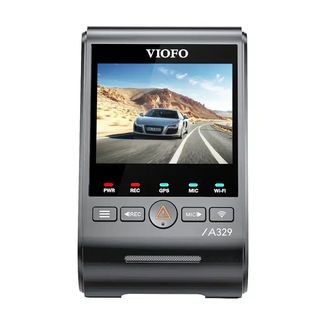
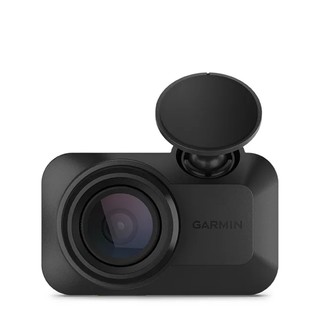
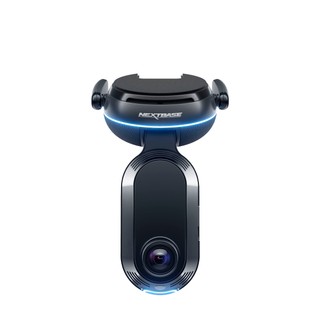

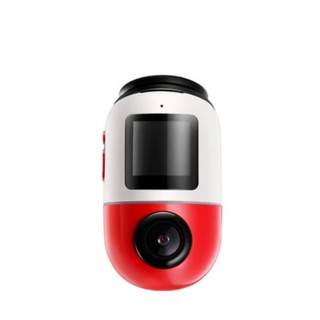
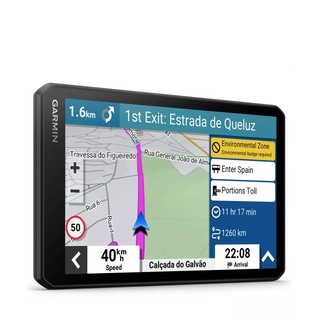

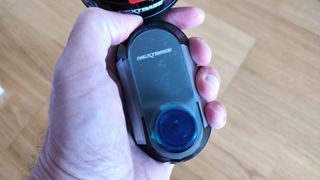
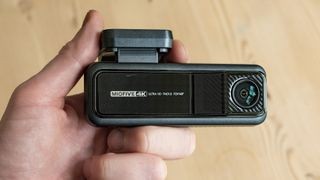
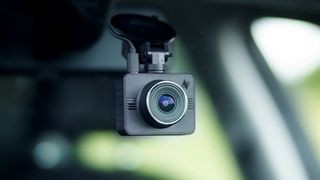

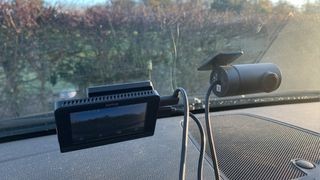
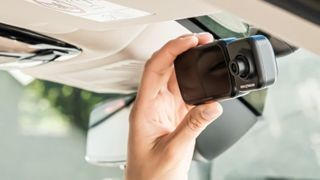

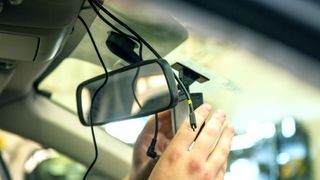
Also Consider These Vehicle Cameras
Beyond our top picks, several other vehicle cameras deserve consideration. These honorable mentions offer excellent performance and features and might be a better fit for your specific needs.
- Garmin Dash Cam X310: Garmin’s top-tier dash cam delivers sharp 4K video with HDR, is compact and user-friendly, and includes GPS, a touchscreen, and remote access via the Garmin Drive app (subscription required for remote access). It’s a premium, durable option.
- Nextbase Piqo: A more affordable alternative to the Nextbase iQ, the Piqo offers “Lite” versions of the iQ’s smart features in a compact design, perfect for budget-conscious users seeking some smart functionality.
- Nextbase 622GW: Excellent 4K video, Night Vision mode, polarizing filter, and image stabilization ensure superb footage quality in all conditions. Alexa voice control and What3Words emergency geolocation are valuable additions.
- Nexar Pro: A five-star dual-cam solution ideal for high-mileage drivers, recording both inside and outside the vehicle. While limited to 1080p, it includes unlimited cloud storage.
- Vantrue E1: A well-rounded, compact option with crisp 2.5K video and 1080p 60fps recording, along with built-in GPS, offering a good balance of features and size.
- Thinkware X1000: Unique with a large touchscreen interface, minimizing reliance on a companion app. Available as a dual-camera bundle, though it lacks built-in GPS.
- Miofive Dual Dash Cam: If you like the Miofive S1, consider the dual-camera ‘Ultra’ version or the high-end Miofive Dual Dash Cam for comprehensive front and rear coverage.
- Vantrue N2 Pro: A great option for ride-share drivers, featuring front and interior recording, ideal for professional use.
- Viofo A229 Pro: Another excellent all-around option from Viofo, offering high-quality video and reliable performance.
The Thinkware X1000 dash cam and it’s huge screen (Image credit: Future)
How to Choose the Best Vehicle Camera for You
Choosing the right vehicle camera depends on your specific needs and priorities. Here are key factors to consider:
Number of Cameras:
- Single Camera: Records the view in front of your vehicle, suitable for basic recording needs.
- Dual Camera: Adds a rear-facing camera for comprehensive front and rear coverage, ideal for increased protection and incident recording. Some dual cameras include interior cabin recording, useful for ride-share drivers.
- Triple Camera: Often used by professional drivers, adding a side-view camera for even more extensive coverage, particularly beneficial for larger vehicles like trucks.
Video Resolution:
- Full HD (1080p): Sufficient for most situations, capturing enough detail to identify larger objects and general incident details.
- 4K: Offers significantly sharper and more detailed video, making it easier to identify crucial details like license plates and fine details, especially in complex scenes or at a distance. Recommended for maximum clarity and evidence gathering.
Video Frame Rates:
- 30fps: Standard frame rate, adequate for general video review at normal speed.
- 60fps: Provides smoother video, particularly beneficial for capturing fast-moving action. Allows for clearer slow-motion playback to analyze details.
Features to Consider:
- Touchscreen Display: For easy on-device viewing and settings adjustments.
- Companion App: For smartphone connectivity, remote viewing, settings control, and easy video transfer and sharing.
- GPS: Records location and speed data, crucial for accurate incident documentation.
- Parking Surveillance: Monitors your vehicle while parked, detecting impacts and recording potential incidents like parking lot damage or hit-and-runs.
- Voice Control: For hands-free operation and convenient control of camera functions.
- Sat Nav: Integrated navigation system, useful for older vehicles without built-in infotainment.
- What3Words: Precise geolocation data for emergency situations, providing exact location information for emergency services.
(Image credit: Future)
Getting Started with a Vehicle Camera
Installation and ease of use vary across different vehicle cameras. Here are some general tips to get you started:
Mounting:
- Most vehicle cameras mount to your windscreen using a suction cup or adhesive pad.
- Ensure placement does not obstruct your view of the road.
- Rear cameras often require routing cables along the car’s headliner for a clean installation.
Recording:
- Vehicle cameras typically record in short clips (1-2 minutes) in a continuous loop.
- Loop recording automatically overwrites the oldest footage to maximize memory card usage.
- G-sensors automatically detect impacts and save the relevant footage to prevent overwriting.
- Manual saving options are also available to tag important clips.
Additional Features:
- Higher-end cameras offer features like 4K video, night vision, Wi-Fi, Bluetooth, and voice control.
- Parking modes utilize time-lapse recording and motion detection for surveillance while parked.
(Image credit: Future)
Is It Worth Having a Vehicle Camera?
Absolutely, yes. The benefits of having a vehicle camera far outweigh the minimal drawbacks.
Benefits:
- Evidence in Accidents: Provides crucial video evidence in case of accidents, helping to prove fault and protect you from false claims. Clear footage can significantly simplify insurance claims and legal disputes.
- Deterrent to Bad Driving: The presence of a vehicle camera can encourage safer driving habits in yourself and other drivers.
- Protection Against Insurance Fraud: Dash cam footage can help protect you from fraudulent insurance claims and scams.
- Record Unexpected Events: Capture unexpected events on the road, from accidents involving others to interesting or unusual occurrences.
- Emergency Assistance: Some cameras offer emergency SOS features, automatically contacting emergency services in case of a severe accident.
- Parking Mode Security: Provides surveillance while parked, capturing potential damage or theft attempts.
Even basic vehicle cameras offer significant benefits, making them a worthwhile investment for any vehicle owner concerned about safety and security.
(Image credit: Nexar)
Can a Vehicle Camera Drain Your Car Battery?
Vehicle cameras are powered in different ways, so battery drain is a valid concern:
Power Sources:
- Internal Battery: Some cameras have small internal batteries, primarily for short-term parking mode or emergency recording.
- Cigarette Lighter/USB Port: Most commonly powered via your vehicle’s 12V or USB port. Leaving these plugged in can potentially drain your battery if the port remains powered when the car is off.
- Hardwiring: Professional installation hardwires the camera directly to your car’s electrical system. Proper hardwiring can be configured to power down with the ignition, preventing battery drain.
Mitigating Battery Drain:
- Check Power Port Behavior: Determine if your vehicle’s power ports stay active when the ignition is off.
- Unplug When Parked: If your ports are always-on, unplug the camera when parked for extended periods.
- Hardwire with Parking Mode: For parking surveillance, hardwiring with a proper parking mode kit ensures efficient power management and minimizes battery drain.
- Motion Detection Parking Mode: Cameras with motion detection parking mode only record when motion is detected, reducing power consumption compared to continuous recording.
Choosing the right power setup and parking mode features can effectively minimize or eliminate car battery drain concerns.
(Image credit: Nextbase)
Is a GoPro Better Than a Vehicle Camera?
GoPros are excellent action cameras, but dedicated vehicle cameras are generally better suited for in-car recording:
GoPro Advantages:
- High Video Quality: GoPros offer excellent video quality, often exceeding that of many dash cams, with up to 5.3K resolution.
- Compact Size: Small and discreet, minimizing windscreen obstruction.
- Versatility: Can be used for action sports and various other recording purposes.
Vehicle Camera Advantages:
- Automatic Loop Recording: Dash cams are designed for continuous loop recording, automatically overwriting old footage and ensuring constant recording without manual intervention.
- Incident Detection: Built-in G-sensors automatically detect impacts and save critical footage.
- Parking Mode: Dedicated parking surveillance features are common in dash cams, providing security while parked.
- Ease of Use: Dash cams are designed for simple, set-and-forget operation in vehicles.
- Features Optimized for Driving: Dash cams often include features specifically for driving, such as GPS logging, driver assistance alerts, and wider operating temperature ranges.
While GoPros can be used as dash cams, dedicated vehicle cameras offer features and functionality specifically tailored for in-vehicle recording and are generally a more practical and user-friendly solution for most drivers.
(Image credit: Future)
Are Vehicle Cameras Legal?
Yes, vehicle cameras are generally legal in both the UK and the US. However, some regulations and best practices should be followed:
Legality and Regulations:
- General Legality: Dash cam use for recording public roads is generally legal in most jurisdictions.
- Windscreen Mounting: Some regions have restrictions on where you can mount devices on your windscreen. Check local laws for specific placement regulations.
- Privacy: Recording on public roads is generally considered legal as there is no reasonable expectation of privacy in public spaces. However, recording audio inside the vehicle might have stricter regulations, especially for commercial drivers (e.g., taxi drivers).
- Commercial Use: Taxi and ride-share drivers may have specific regulations regarding passenger notification and audio recording consent.
- Data Protection: Be mindful of data protection laws when sharing dash cam footage online. Blurring faces and license plates is recommended to protect privacy.
- European Restrictions: Some European countries have stricter regulations or restrictions on dash cam use. Familiarize yourself with local laws when driving internationally.
Best Practices:
- Avoid Obstruction: Ensure the dash cam does not obstruct your view of the road.
- Inform Passengers: If recording audio, especially in commercial settings, inform passengers about the recording.
- Use Responsibly: Use dash cam footage responsibly and ethically, respecting privacy and data protection guidelines.
(Image credit: Nextbase)
What is Loop Recording?
Loop recording is a crucial feature that allows vehicle cameras to continuously record:
How Loop Recording Works:
- Continuous Recording: Dash cams record video continuously in a loop, ensuring you always have a recording of your drive.
- Automatic Overwriting: When the memory card is full, the camera automatically overwrites the oldest video clips with new recordings, maintaining continuous recording without manual deletion.
- Segmented Clips: Footage is typically saved in short, segmented clips (e.g., 1-minute, 3-minute, or 5-minute segments) for easier file management and retrieval.
- Incident Protection: G-sensors and manual save buttons protect important clips from being overwritten in case of accidents or noteworthy events.
Loop recording ensures that your vehicle camera is always recording and ready to capture critical events without requiring constant memory card management.
Meet the Team of Vehicle Camera Experts
Our team of reviewers brings decades of experience in camera technology and testing, ensuring in-depth and reliable vehicle camera reviews.
- Alistair Charlton: Freelance technology and automotive journalist with extensive experience reviewing dash cams and other tech products.
- Rob Clymo: Long-time tech journalist with expertise in automotive technology, including in-car electronics and vehicle testing.
- Tim Coleman: TechRadar’s Cameras Editor, overseeing all camera content and bringing deep expertise in photography and videography to vehicle camera reviews.
- Leon Poultney: Automotive and tech journalist specializing in in-car technology and the convergence of automotive and consumer electronics.
- Paul Hatton: Digital expert with a computer science background, providing technical expertise and in-depth analysis in reviews.
Alistair Charlton
Rob Clymo
Tim Coleman
Leon Poultney
Paul Hatton
How We Test Vehicle Cameras
Our vehicle camera testing process is rigorous and real-world based:
Testing Methodology:
- Real-World Installation: We install cameras in our test vehicles using standard mounting methods (suction cups or adhesive pads), mimicking real-user setup.
- Smartphone Pairing: We pair cameras with smartphones and companion apps to assess connectivity and app functionality.
- Day and Night Driving Tests: We conduct extensive driving tests in various conditions, including day and night, and different weather scenarios, to evaluate video quality under diverse lighting and weather.
- Footage Review: We transfer and review footage on smartphones and computers to assess video quality, clarity, and detail, paying close attention to license plate legibility and overall image quality.
- Feature Testing: We thoroughly test all advertised features, including voice assistants, driver assistance systems, parking modes, and connectivity features.
- Simulated Collision Testing: We simulate collisions by firmly tapping the dash cam to test G-sensor sensitivity and incident detection functionality.
- Ease of Use Assessment: We evaluate the overall user experience, including setup, daily operation, menu navigation, and ease of accessing and transferring footage.
(Image credit: Future)
(Image credit: Let Geo Create / Shutterstock)
Why You Should Trust TechRadar’s Vehicle Camera Reviews
TechRadar is committed to providing honest, impartial, and reliable reviews and buying advice.
Our Commitment:
- Editorial Independence: Our reviews are editorially independent and not influenced by advertisers or manufacturers.
- Decades of Experience: Our review team has decades of combined experience in testing and reviewing consumer electronics.
- Rigorous Testing: We conduct thorough real-world testing to assess product performance in realistic scenarios.
- Impartial Recommendations: Our recommendations are based solely on product performance and merit, providing unbiased buying advice.
- Transparency and Standards: We adhere to strict editorial standards and are regulated by IPSO, ensuring accountability and ethical review practices.
For more information about our commitment to editorial independence and our review standards, please visit our About Us page.